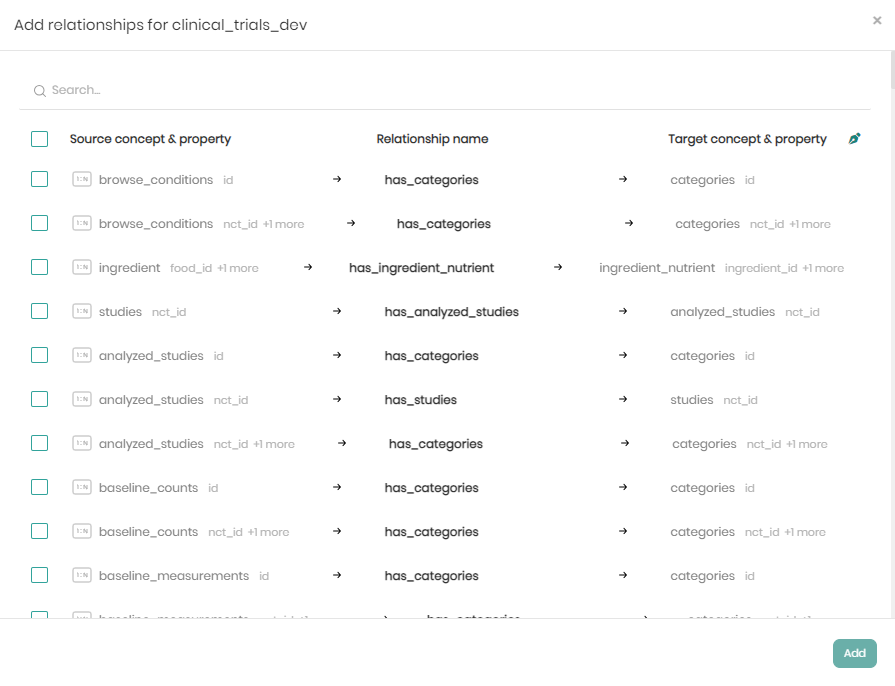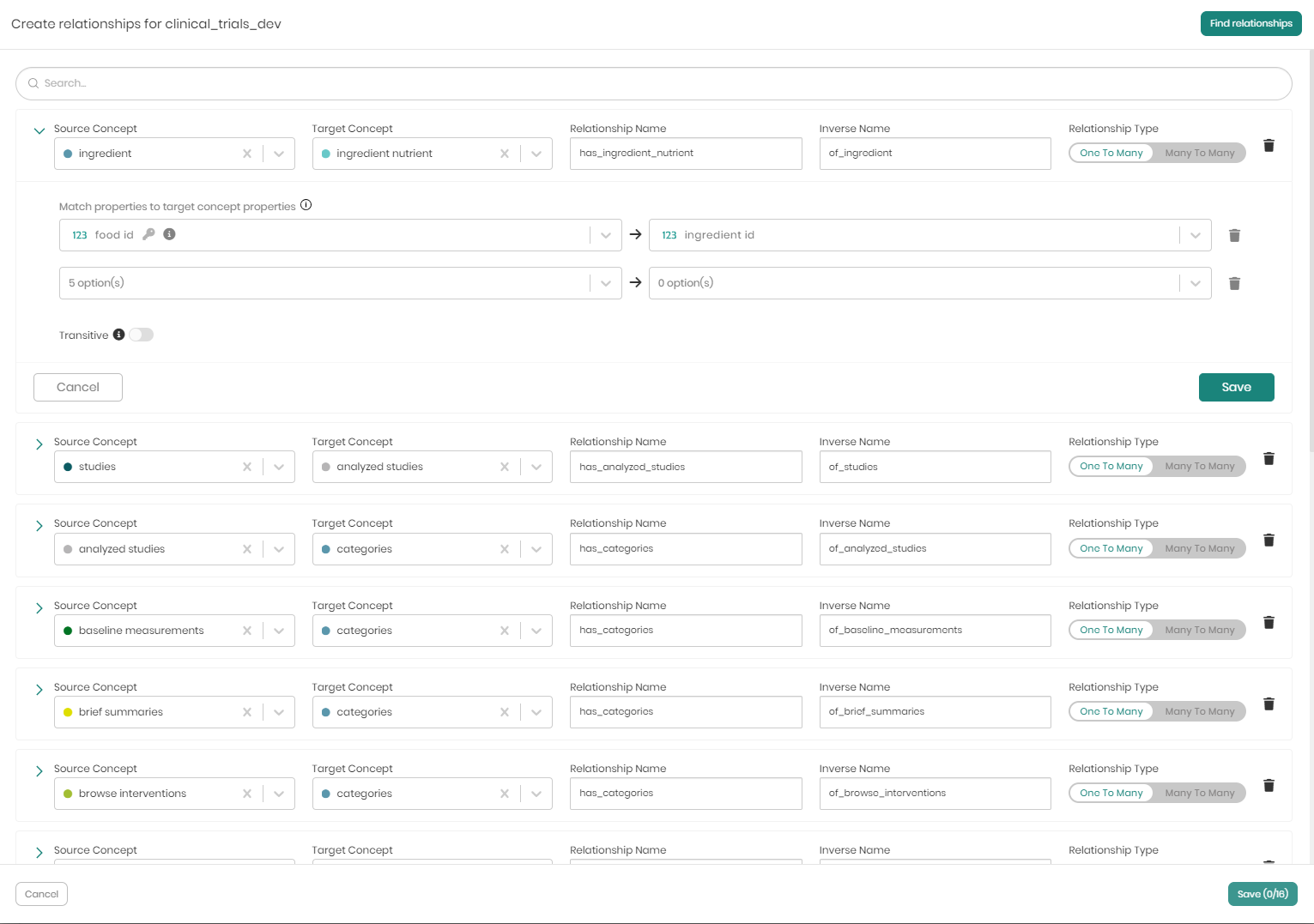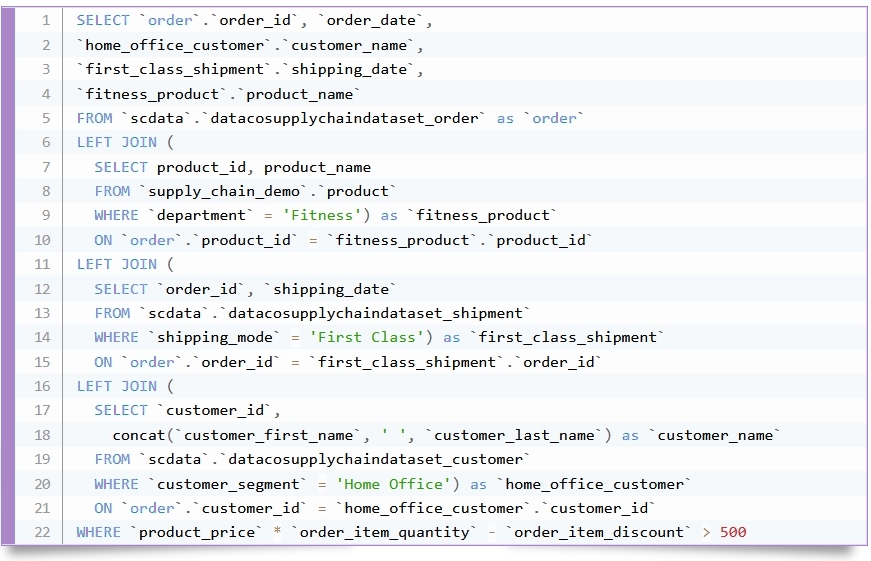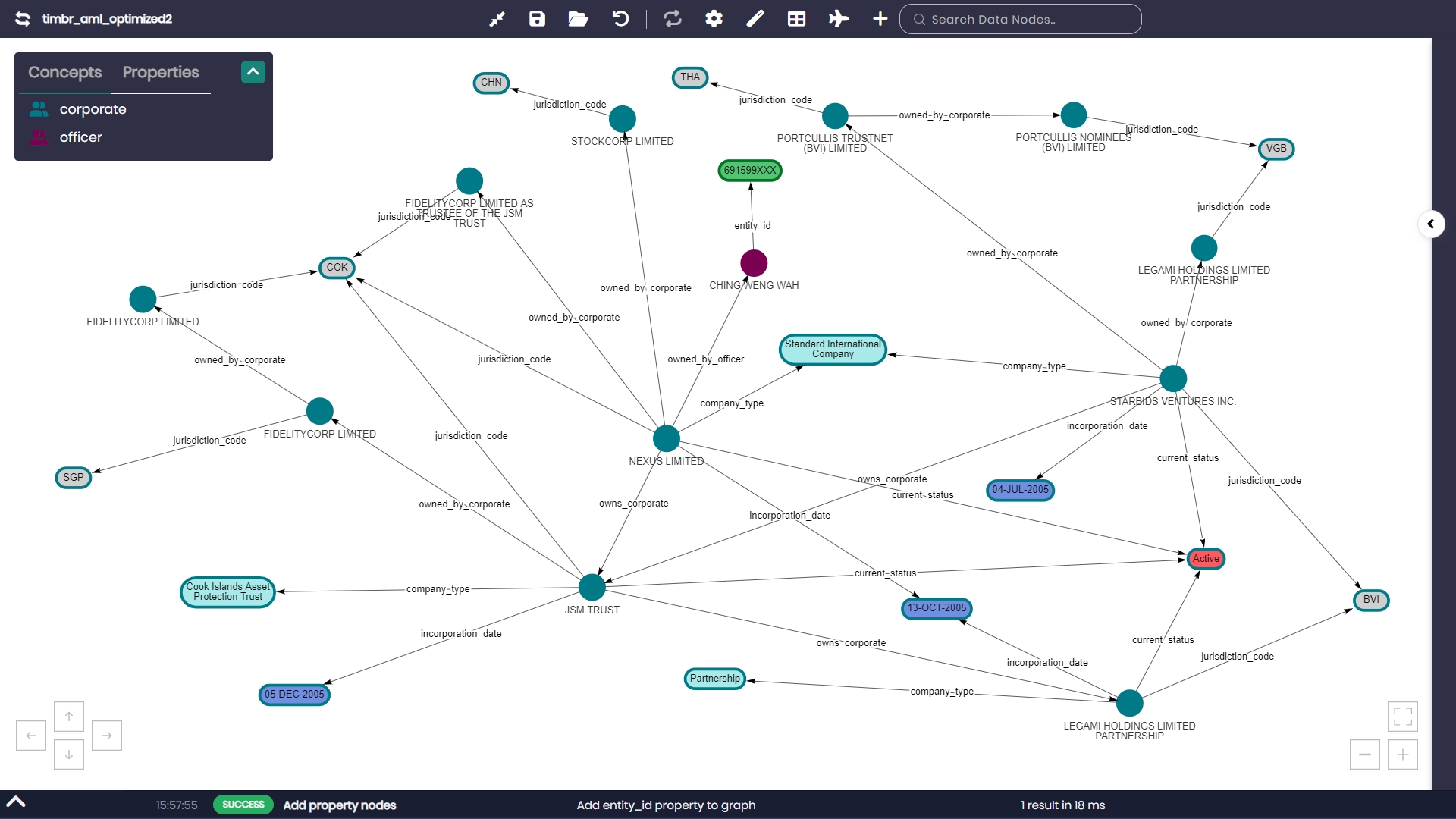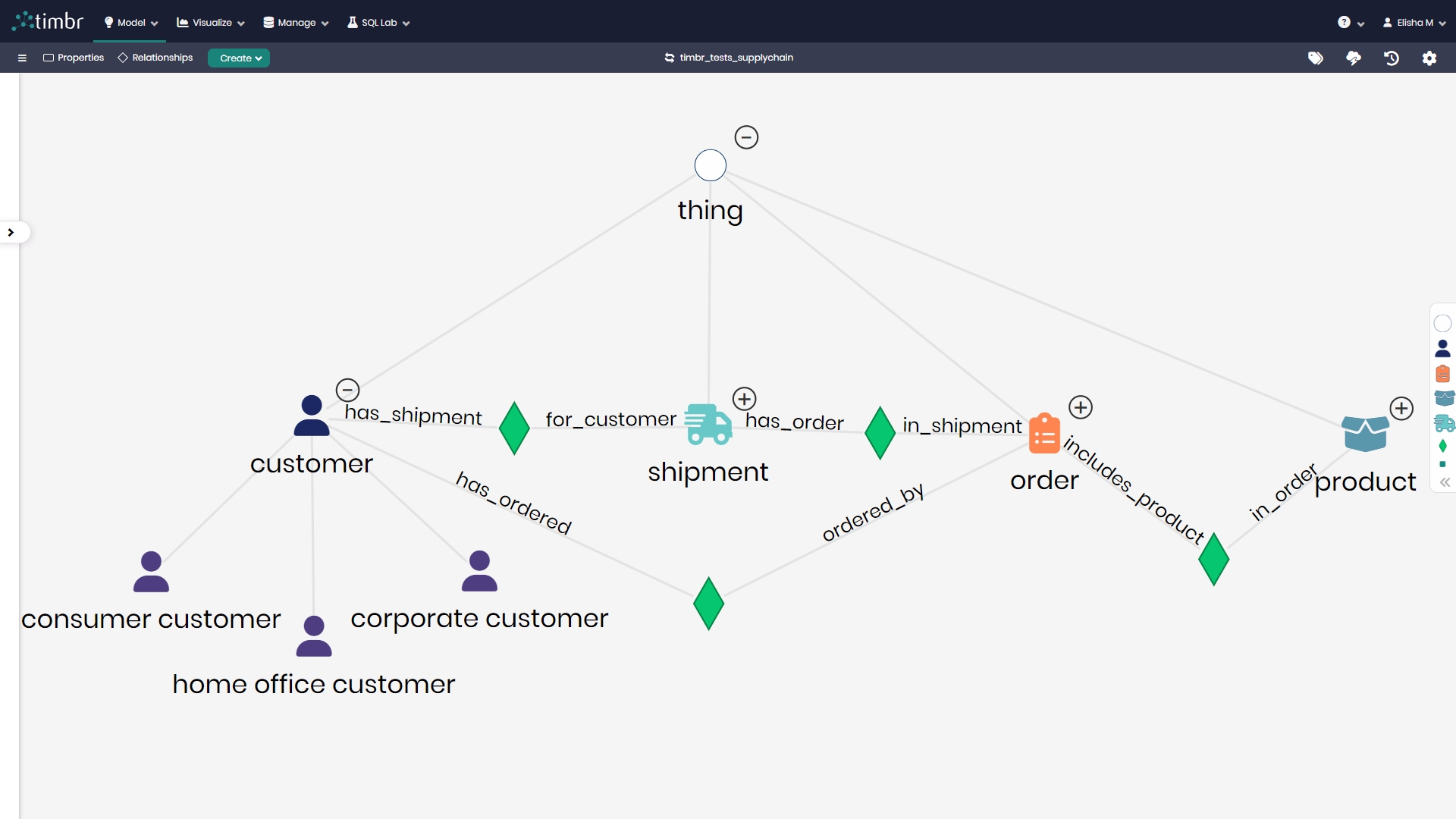
How does Timbr accelerate engineering of a semantic layer on top of data? In this part 2 of the series we discuss and demonstrate the bulk creation of relationships between the different entities created in the semantic model, to reduce SQL query size by up to 90% and explore data as a web of relationships.
Introduction
In part 1 of this series, we explored how Timbr revolutionizes the way users model their data with its automated intelligent semantic modeling capabilities. The journey into Timbr’s transformative technology continues as we delve deeper into its core functionalities. This time, our focus shifts to a groundbreaking aspect of Timbr: the bulk creation of relationships between various entities in the semantic model. This innovative approach is not just about linking data points; It’s about transforming the entire paradigm of data exploration and data consumption.
The power of Timbr lies in its ability to reduce the complexity of SQL queries, a common bottleneck in data analysis, as well as enable innovative graph exploration capabilities. By automating the creation of relationships, Timbr significantly cuts down SQL query size – by up to 90%, and enables the exploration of complex relationships and patterns through a visual graph. This leap in efficiency opens a new realm of possibilities. Analysts and data scientists can now explore their data as an interconnected web of relationships, rather than a static collection of tables and fields.
Automating Relationship Creation
Creating meaningful connections between disparate data points is often a meticulous and labor-intensive task. However, Timbr is set to ease this process with its capability to create data model relationships in bulk. With just a few clicks Timbr seamlessly interlinks entities across datasets, transforming a complex web of data into an accessible, integrated semantic data model. This is the power of Timbr – delivering an intelligent semantic data model powered with relationships via a streamlined and efficient process.
Timbr doesn’t just automate data model relationship creation; it redefines it. The Timbr platform intelligently identifies potential connections within your data, crafting a comprehensive network that enhances your entire semantic model. From illustrating customer behavior patterns to mapping intricate product relationships, Timbr ensures that every possible connection is explored and established according to your specific needs.
As the scope of your data expands, so does the capacity of Timbr to create relationships, seamlessly adapting to accommodate a growing network of entities and connections. Importantly, this scalability does not sacrifice the ability for customization. Timbr offers you the flexibility to mold the relationship creation process to fit your business needs and goals. Whether your focus is on improving data precision or fine-tuning the connections between entities, Timbr is designed to evolve alongside your data environment, ensuring a perfect balance between broad scalability and individualized customization.
So how does this transformative approach work and impact your SQL queries?
Effortless Bulk Relationship Creation in Timbr: A Step-by-Step Guide
In Timbr’s relationship wizard, right off the bat, Timbr automates the scouting process for potential relationships within your data model. This functionality stands out especially in complex models where manually pinpointing connections could be overwhelming.
The way it works is that Timbr will greet you with a comprehensive list that details the source concepts the relationship originates from, the suggested names for the relationships, and the target concepts they connect to. This makes it easy to view the relationships in context and fully understand how each proposed connection fits into the larger structure of your data model.
Timbr’s automated scouting meticulously analyzes the entire data model, identifying possible relationships that might not be immediately apparent. This process is not just about finding connections; it’s about uncovering the most meaningful and impactful relationships that can enhance the richness and usability of your data model.
After choosing the desired relationships, you can modify each one by adjusting names, properties, and even relationship types. When finished, a simple click on Save will create all the relationships at once.
With just a few clicks, Timbr’s relationship wizard empowers you to establish relationships across your entire model efficiently. It eliminates the need for coding, creating views, or using JOIN statements, handling everything seamlessly behind the scenes.
The Relationships Impact in Action
Simplifying Queries with Timbr’s Semantic SQL
Timbr’s Semantic SQL represents a revolutionary step in data querying, offering a simpler and more intuitive approach to SQL queries. By eliminating the need for complex JOINs statements due to the relationships defined, Semantic SQL queries are formulated in standard SQL language but with a significant twist. Instead of directly querying the data, these queries interact with the semantic business model (ontology) leveraged with the semantic relationships that are mapped onto the data.
Short SQL queries
Without Timbr: 22 lines of SQL
SELECT `order`.`order_id`, `order_date`,
`home_office_customer`.`customer_name`,
`first_class_shipment`.`shipping_date`,
`fitness_product`.`product_name`
FROM `scdata`.`datacosupplychaindataset_order` as `order`
LEFT JOIN (
SELECT product_id, product_name
FROM `supply_chain_demo`.`product`
WHERE `department` = 'Fitness') as `fitness_product`
ON `order`.`product_id` = `fitness_product`.`product_id`
LEFT JOIN (
SELECT `order_id`, `shipping_date`
FROM `scdata`.`datacosupplychaindataset_shipment`
WHERE `shipping_mode` = 'First Class') as `first_class_shipment`
ON `order`.`order_id` = `first_class_shipment`.`order_id`
LEFT JOIN (
SELECT `customer_id`,
concat(`customer_first_name`, ' ', `customer_last_name`) as `customer_name`
FROM `scdata`.`datacosupplychaindataset_customer`
WHERE `customer_segment` = 'Home Office') as `home_office_customer`
ON `order`.`customer_id` = `home_office_customer`.`customer_id`
WHERE `product_price` * `order_item_quantity` - `order_item_discount` > 500
With Timbr: 6 lines of SQL
SELECT order_id, order_date,
`ordered_by[home_office_customer].customer_name`,
`in_shipment[first_class_shipment].shipping_date`,
`includes_product[fitness_product].product_name`
FROM dtimbr.`order`
WHERE revenue > 500
- Query the model
- Quickly answer complex questions
- Write and debug queries easily
- Leverage explicit relationships to eliminate JOINs and UNIONs
- Simplify recursive queries
Exploring data as a web of relationships
The Timbr platform contains a Graph Exploration that stands out by leveraging the semantic relationships in the data model to transform complex data into an easily navigable virtual graph. This innovative approach allows users to easily visualize and explore intricate data relationships, making it a valuable tool for analysts and business professionals.
The strength of this feature lies in Timbr’s semantic model, which interconnects diverse data sources like JSON, XML, and CSV files. By focusing on these predefined relationships, Timbr facilitates a deeper understanding of data patterns and trends, enabling users to quickly uncover hidden insights and make informed decisions without the need for coding or extracting data into traditional formats.
Conclusion
After showing in Part 1 how Timbr efficiency turns complex datasets into structured knowledge graphs in minutes, we continued to explore how Timbr enables users to create bulk relationships that connect the entire data in the knowledge graph.
Timbr’s bulk relationship creation and its integration into SQL querying and data visualization represent a significant leap forward in data analytics. It offers a more holistic, efficient, and user-friendly approach to data management, empowering users to discover and leverage the full potential of their data.
We encourage you to explore the power of Timbr’s bulk relationships in action. Check out our tutorial video for a comprehensive guide on harnessing the full potential of bulk relationships.
How do you make your data smart?
Timbr virtually transforms existing databases into semantic SQL knowledge graphs with inference and graph capabilities, so data consumers can deliver fast answers and unique insights with minimal effort.

